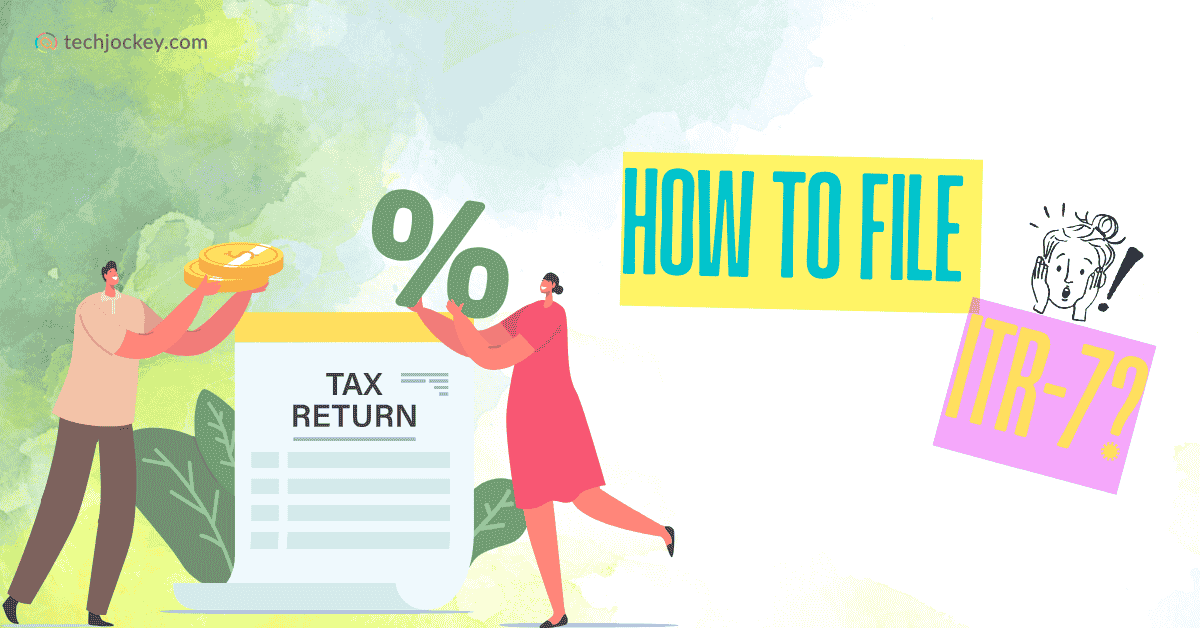
Filing income tax return form 7 is a non-negotiable for trusts, political parties, charitable institutions, and non-profit entities. For them to thus have a clear understanding of how to file the ITR-7 form accurately is not only a compliance necessity but also a shield against legal and financial complications.
To make the process easy for all, we will walk you through what ITR-7 is, its prerequisites, and a detailed step-by-step filing process, so your tax returns don’t end up giving you a headache in return.
The ITR-7 form is an income tax return form applicable to entities that are required to file returns under sections 139(4A), 139(4B), 139(4C), or 139(4D). This includes trusts (charitable or religious), political parties, research associations, universities, news agencies, electoral trusts, and similar organizations claiming income exemptions or paying tax on specified incomes.
Unlike personal ITR forms (like ITR-1 to ITR-4), ITR-7 is designed to capture varied details about trust income, donations received, application of funds, audit reports, and exemptions claimed.
It is an annexure-less form, so no physical documents are submitted, but the information reported must exactly reflect the entity’s financials and registrations.
Before beginning the ITR-7 filing process, trusts or entities should gather the following documents and information…
For those looking to file income tax return form 7 in a timely and accurate manner, the following guide is your best bet…
Step 1: Visit the Income Tax e-Filing Portal
Access the official Income Tax Department e-filing portal at https://www.incometax.gov.in.
If you do not have an account, register using the PAN of the trust/entity.
Step 2: Log in to Your Account
Use the PAN and password of the trust or institution. If two-factor authentication is enabled, complete that process.
Step 3: Download the Latest ITR-7 Form
Under the Downloads section, download the latest utility relevant for the assessment year (Java or Excel format). This form contains multiple parts and schedules tailored for different sections of the Income Tax Act, including details of income, exemptions, investments, audit, and tax paid.
Step 4: Fill Basic Details in Part A – General Information
ClearTax Income Tax
Starting Price
Price on Request
Step 5: Fill Details of Income and Exemptions in Part B and Related Schedules
Step 6: Upload Details of Investments and Foreign Assets
Step 7: Fill Tax Payment and Deduction Details
Step 8: Review and Validate
Step 9: Generate and Upload JSON File
Step 10: Verification of Return
Step 11: Acknowledgment and Record Keeping
Here’s how you can initiate ITR-7 form downloading…
These digital copies are essential for audit and legal compliance.
For Assessment Year 2025-26, the due date to file ITR-7 is 31st October 2025. This form is applicable to trusts, political parties, charitable institutions, NGOs, and other entities claiming exemptions under Sections 139(4A), 139(4B), 139(4C), or 139(4D). Filing ITR-7 before the deadline helps avoid late fees, interest charges, and ensures smooth compliance with income tax laws while enabling faster refund processing.
Whilst filing ITR-7, don’t make the following blunders…
Conclusion
If, as nonprofits, you know how to file ITR-7, not only would you be able to remain transparent in your operations and but also maintain tax compliance. Just remember to start the ITR-7 filing process early every assessment year and while at it, make use of technology in the form of income tax software, if need be.
We can help you with the latter; just give our product team a call and let them take care of the rest!
When you begin your building information modeling journey, selecting the right software is crucial. Your… Read More
Highlights: The Digital Personal Data Protection Act, India, 2023 is the first comprehensive law in… Read More
Smart technology assists us in our daily lives, and it is operating silently in the… Read More
The holiday season is all about cozy lights, warm emotions, and picture-perfect memories and now,… Read More
Android trojan, for the unversed, is malware that poses a serious threat to mobile… Read More
Smartphones have completely transformed how we bank, making money transfers and payments quicker and more… Read More